Tell me the old, old story
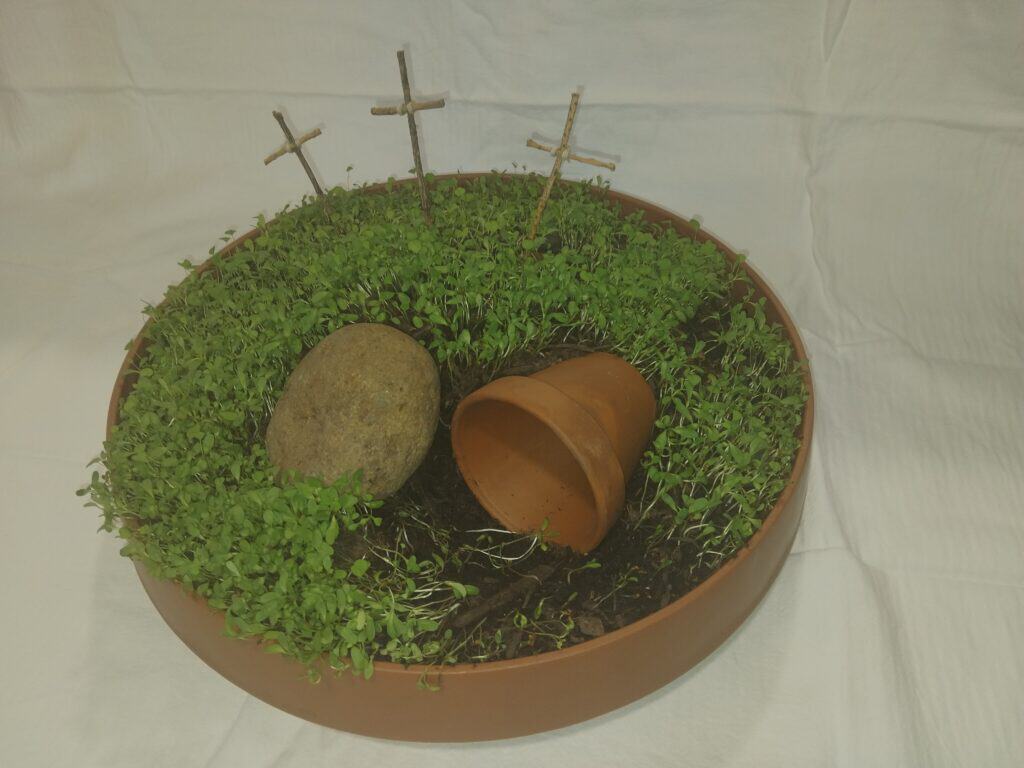
Author: Faith in Later Life
‘Tell me the old, old story… of Jesus and His love’, the Easter story is certainly both old and about Jesus’ love. The question therefore is not ‘what’ but ‘how’. How can we share Christianity’s core story with people who have celebrated Easter for decades. For older people and people living with dementia who remember a time before hollow easter eggs?
One powerful answer is by engaging all the senses and utilising ancient and modern concepts. The following are suggestions for great options for all the dates in the Easter calendar.
 Shrove Tuesday
Shrove Tuesday
For people like me who grew up in a ‘low’ church, Shrove Tuesday may be an unknown quantity, but it’s simply the day before Lent, the 40 days leading up to Easter. The tradition of pancakes was simply a practical way to use rich food including eggs which were not eaten during the Lenten fast. The 40 days of fasting being an echo of Jesus fast in the wilderness. ‘Shrove’ is simply the old English word for sheer, as is how to get wool from a sheep. It was traditional to go to confession on Shove Tuesday and be shorn of your sins in preparation for Lent.
With older people and people living with dementia, Shrove Tuesday is a great opportunity to talk about Jesus. My basic strategy is this, cook pancakes on a barbeque or if inside on an electric frypan. Have a quiz while people are being served with Easter questions such as: What is the first day of Lent? Can you name all the special days in the traditional Easter? Why do we have pancakes on Shrove Tuesday? They talk about the history of Lent and the message of Easter.
Ash Wednesday
As Shove Tuesday is normally big in the care home where I serve, I don’t normally make a big thing of Ash Wednesday. However, if one of the local churches wants to come and run a service it’s a great opportunity. Or if you can’t do Shrove Tuesday, then focus on Ash Wednesday. For those who are unfamiliar with Ash Wednesday, traditionally, it’s the first day of Lent and is marked with a church service after which the minister uses ashes to make a cross on the congregant’s heads. Traditionally, the ashes are from the palm branched used the previous Palm Sunday. Biblically, ashes are clearly linked to repentance and sorrow, the significant value to my mind of an ash cross is as a conversation starter.
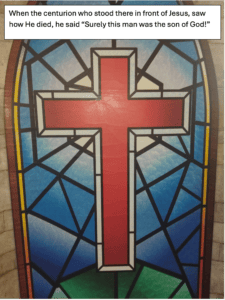
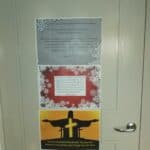 Lent
Lent
While lent is traditionally marked by fasting, often today not from food but something else e.g. social media. There are two other strategies I recommend. The first is it’s a great opportunity to run a Lenten Bible study or Bible reading group. The 40 days means the commitment is limited and the Easter account makes passage selection easy. There are also Lenten Bible studies available. My second suggestion is more tailored to care homes, where the lead-up to Easter sees a plague of rabbits. So, I print Christian Easter Posters and give them to the residents to put on their doors or in their lounge areas. They are easy to make, and you can download one I made from Faith in Later Life website here.
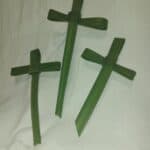 Palm Sunday
Palm Sunday
Jesus’ entry into Jerusalem on an unbroken donkey to cries of praise is a profound story to tell. Using the traditional decoration of palm branches is easy and powerful. A great gift for people attending Palm Sunday celebration is palm crosses, you can order these online. Yet a more powerful option is to make them with the residents in the lead-up to Palm Sunday. They are not hard to make, and there are multiple instructions and instructional videos online.
Maundy Thursday
Traditionally the Thursday before easter, Maundy Thursday is used to mark the last supper with a communion service. While communion in a care home can be ‘challenging’ due to swallowing issues, it is worth the work. Additionally, Maundy Thursday is often the best time to get local clergy and volunteers engaged as they will be busy in their own churches for the weekend Easter dates.
Good Friday
The ‘celebration’ of Jesus’ death, is traditionally the darkest day in the Christian calendar. Historically churches are stripped of any flowers and decoration to mark this. I recommend making a Resurrection Garden as a multisensory tool to mark the horror of the healer’s death on a cross. You can find a video on Making a Resurrection Garden and using a Resurrection Garden – Easter message with a Resurrection Garden. The tradition of leaving the story hanging, with Jesus dead in the tomb is a powerful reminder of the cost of Easter and thus has much to recommend it.
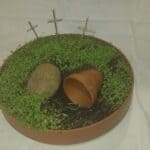
Easter Sunday
From the darkness of Good Friday, Easter Sunday is the most joyous event in the Christian calendar. Hymns about the resurrection, retelling the story of Jesus resurrection and the traditional call and response of ‘Christ is Risen – He is Risen Indeed!’ are powerful tools. Easter Sunday can be further enriched by bringing out the resurrection garden now a green hill with and empty tomb makes a powerful sermon illustration.
Friends if you want more ideas about how to share Jesus’ love throughout the year I strongly recommend ‘Messy Vintage’, part of the Messy Church Suite. You may also be interested in the Faith in Later Life webinar on the 8th of May on Gospel ministry in the midst of dementia – Gospel Ministry in the Midst of Dementia with Ben Boland – Faith in Later Life. You may also be interested in my next book ‘Priceless People’ about Gospel ministry with older people and people living with dementia which will be released by Christian Focus Publication on the 8th of July.
Rev Ben Boland is a visiting lecturer at Brisbane School of Theology and Mary Andrews College in Australia. He has served as an older persons’ chaplain for more than 15 years, and is passionate about gospel ministry with older people and people living with dementia. His new book, Priceless People: Loving older people and people living with dementia (Christian Focus) is available for pre release order on Amazon.
